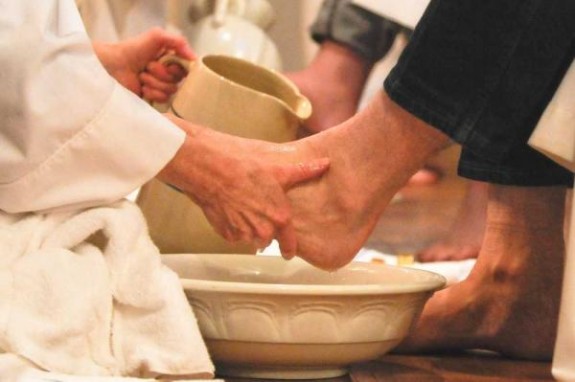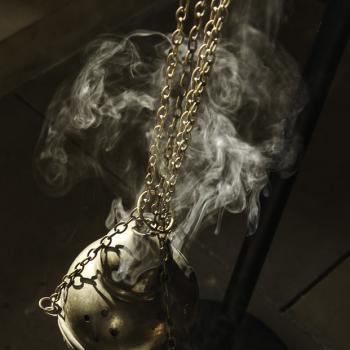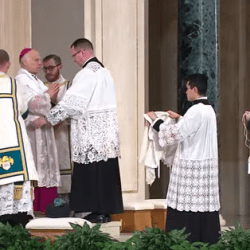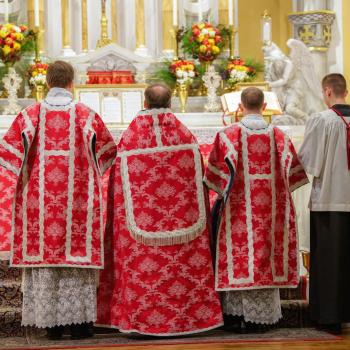Further evidence that it’s a big Church.
The Diocese of San Jose has posted the following on its website, which offers some questions and answers—and some theological analysis—about the ritual that has lately gotten a lot of attention.
The priest who presides at the Holy Thursday Mass should be the primary example for the Christian community of Jesus’ self-giving and humbling act of love for his friends. That is why he is called to lead the washing of the feet. It is also why this ritual reflects not only the command given to all the faithful to love as Christ loved but also the command to complete and total service that is given to all those in ordained ministry as an imitation of Christ’s life of service, even to the point of death.
From this context then, we can look at some questions about this ritual.
Can both men and women participate in the washing of the feet?
Although the rubric in the Roman Missal refers only to men (#11 in the section on the Mass of the Lord’s Supper), the United States Conference of Catholic Bishops, as indicated in their liturgy committee’s statement cited above (and even Pope Francis by his own example) emphasize the significance of “the service that should be given by all the faithful to the Church and to the world” (#4, statement). Therefore, the variation and custom of having both men and women participate in the washing of the feet “is an understandable way of accentuating the evangelical command of the Lord, ‘who came to serve and not to be served,’ that all members of the Church must serve one another in love” (#5, statement). Thus, both men and women, including children, may have their feet washed as well as participate by washing another’s feet.
What is the presider’s role in the washing of the feet?
The priest celebrant, as much as he is able to, should wash the feet of at least several persons as an example to the assembly of Christian love and service and to connect his unique example of service to his role as presider over the Eucharist. This helps to unite the proclamation of the Gospel, the washing of the feet, and the Eucharist. The Gospel we proclaim, and our ritual participation in that Gospel through the mandatum, shows us the kind of love and service that is required of all who share in the Eucharist (see the final note below).
Does there have to be 12 persons selected to have their feet washed?
Nowhere in any of the rubrics does it indicate that 12 persons are to be chosen for this ritual. Although the washing of the feet imitates Jesus’ act of love for his disciples on the night before he died, it is not a re-enactment of that moment of Jesus’ life. It is a ritual that signifies our participation in Christ’s mission of love and service to one another and to those in need in our world today. (For this reason, costumes or any kind of play-acting of the foot-washing scene of the Last Supper in place of the ritual washing of feet is not permitted.) Those coordinating the liturgy should prepare at least several specific persons in advance to participate in the foot-washing but should not try to match the number of people participating in the rite to the historical number of disciples.
















